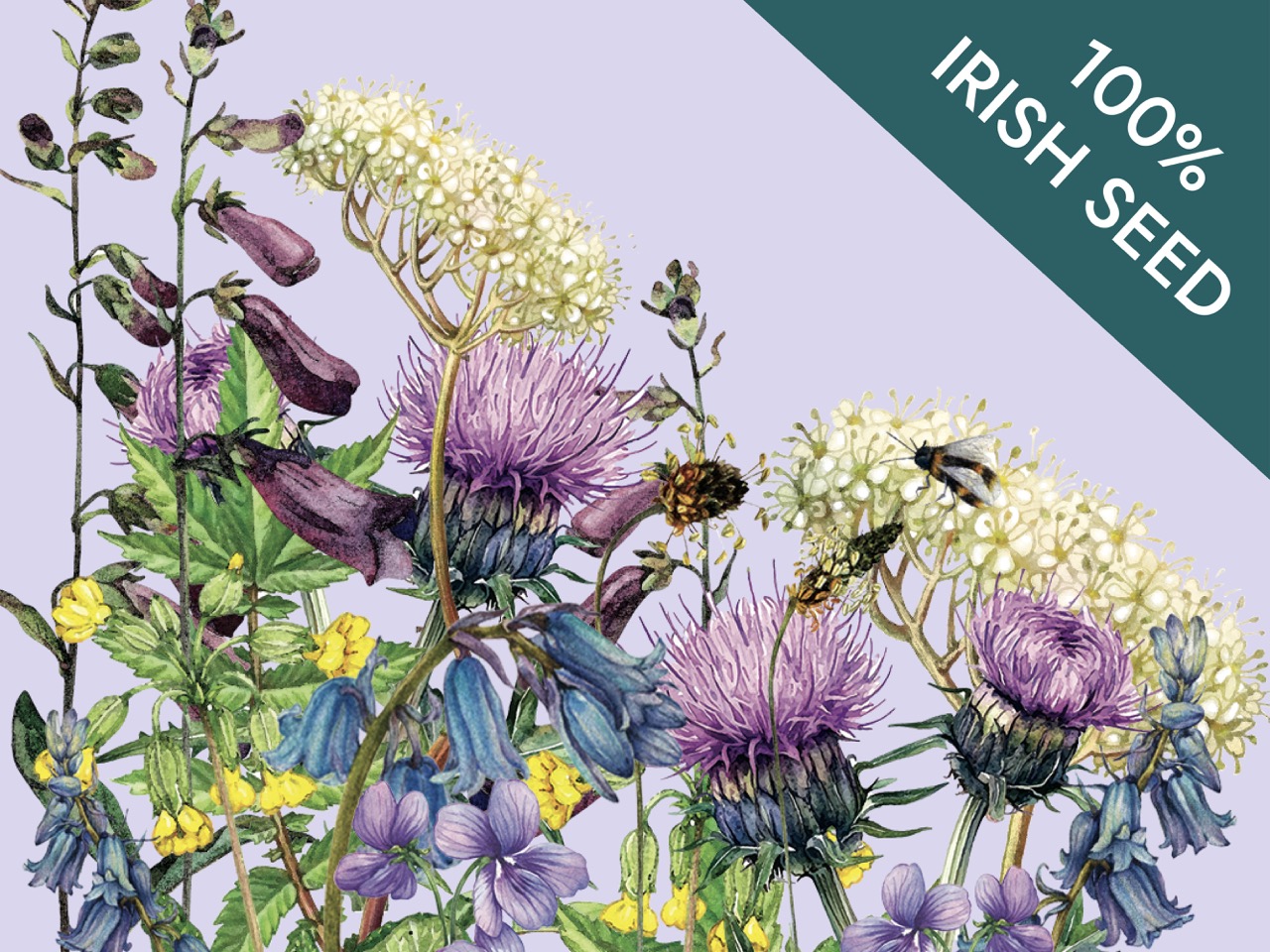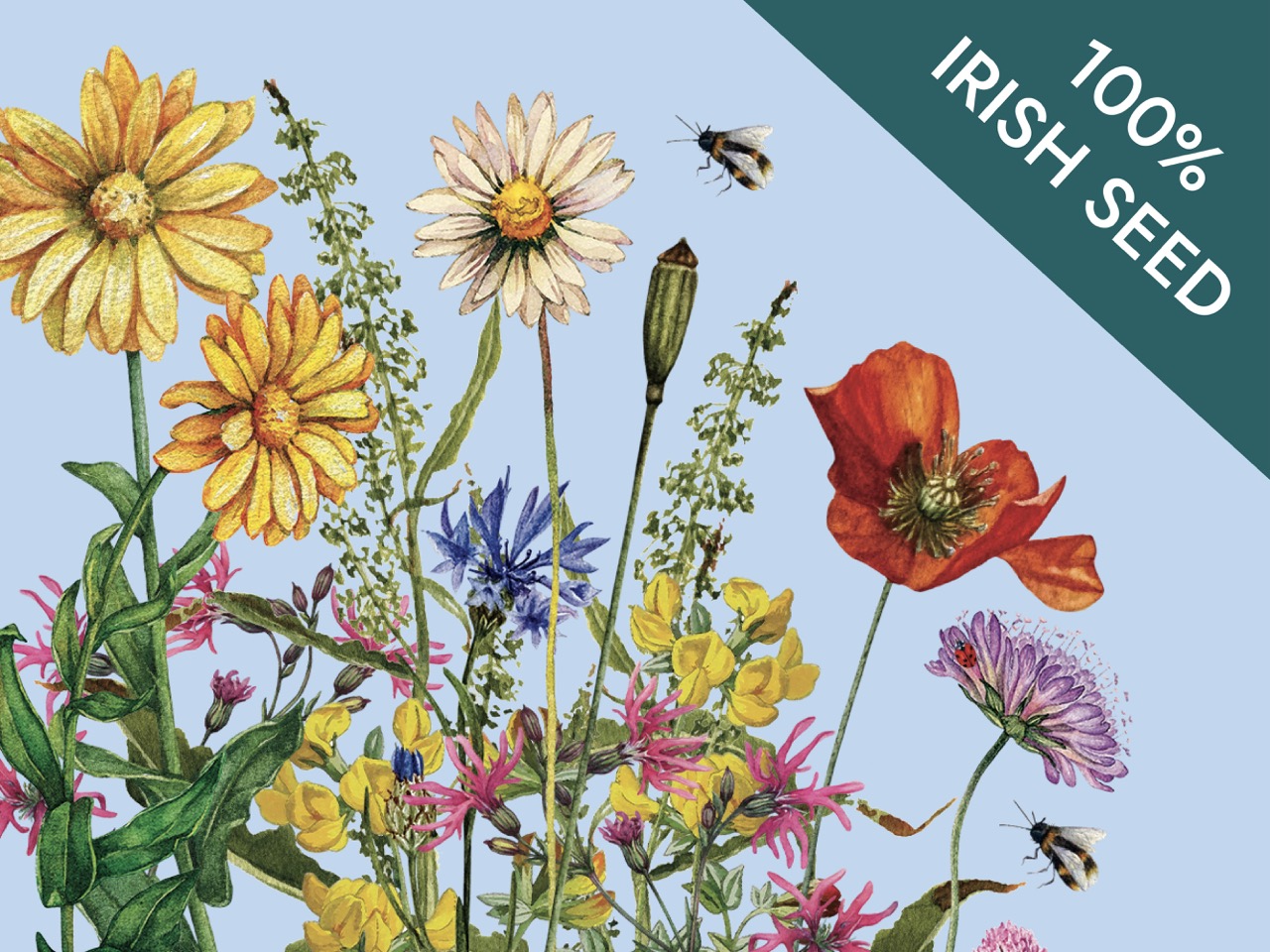Description
A colourful wildflower meadow mix for coastal or seaside locations, including species that do not perform so well inland. It will grow short on windy exposed sites, or can be maintained as a low-growing meadow.
In normal conditions this mix should germinate 6 weeks after a spring sowing. From then on, provided the sward is kept open and a 'thatch' is not allowed develop, species will continue to germinate and emerge through to the third year.
- Up to 80% of all seed should germinate in the first year.
- Up to 70% of all species should germinate in 12 months.
- Up to 95% of all species should have flowered by the fourth year after sowing.
If Autumn sown, this mixture should be sown in late August or early September.
If used to feed migrant birds, cease cutting and allow the mixture to set seed in late summer.
Species List:
Birdsfoot Trefoil, Black Medick, Wild Chamomile, Corn Marigold, Corn Pansy, Corn Poppy, Corncockle, Cornflower, Cowslip, Devils Bit Scabious, Meadow Buttercup, Field Scabious, Foxglove, Hemp Agrimony, Kidney Vetch, Lady's Bedstraw, Lesser Knapweed, Marjoram, Scentless Mayweed, Meadowsweet, Mullein, Ox-eye Daisy, Ribwort Plantain, Sea Mayweed, Selfheal, Sorrel, Thrift, Wild Angelica, Wild Carrot, Yellow Rattle, Yarrow, Sea Campion, Hare's Foot Clover, Sea Aster
Seed Mixture Specifications:
Soil Types: All, except waterlogged clay or gley
Moisture Level: Dry, Normal, Moist.
pH range: Best between 5.5 - 6.5 (<7.5)
Aspect: Sunny
Life Cycle: Annual / Biennial / Perennial.
Height Range: <30cm to >120cm
Flowering Period: June to August.
Fertility Range: Will grow in very fertile soil to poor, if very infertile apply fertiliser (see below).
Wintergreen: Yes
- The main species which should dominate and persist in this mixture: Wild Chamomile, Cowslip, Devil's Bit Scabious, Meadow Buttercup, Field Scabious, Hemp Agrimony, Kidney Vetch, Lady's Bedstraw, Lesser Knapweed, Marjoram, Scentless Mayweed, Meadowsweet, Ribwort Plantain, Selfheal, Yarrow Yellow Rattle.
- Annual Species: Red Bartsia, Yellow Rattle, Corn Chamomile, Corn Marigold, Corn Pansy, Corn Poppy, Corncockle, Cornflower, Scentless Mayweed
- Biennial Species: Foxglove, Mullein, Wild Angelica, Wild Carrot.
- Rare, unusual, and feature species: Hare's Foot Clover, Sea Aster.
- Species which will grow if the conditions are ideal: Thrift, Sea Mayweed
- Species which will be affected by management: Sea Campion. Ox-eye Daisy.
Many additional seaside species may be added to this mix if desired.
Product Warning: While this Ecotype mixture contains the seed of edible and herbal species, it is recommended that this mixture is not for human or animal consumption as it contains species such as Corncockle and Tree Lupin which are toxic if ingested.
Instructions
Notes: Use on any soils near the coast (except for waterlogged). This mix can also be sown on golf links.
The Coastal Colour mix works well as a low growing meadow. Most of the species can be regularly 'short cut' or mown.
In exposed coastal situations this mixture may not require cutting, as the foliage will be desiccated by the winter wind.
Ideal for light sandy or loam soils, in dry or wet situations.
Sowing Specification:
Do not let the soil dry out; sow in early spring or early September.
Roll or rake into surface to keep out of reach of birds.
It may be beneficial to protect first flush seedlings in very exposed situations.
Soil Preparation: Normal; create fine tilt on seed bed. If clay soil, ensure a fine tilt or press the seed into clean soil.
Optimum Sowing Time: Spring or early autumn, when the soil is warm.
Sowing Conditions: Normal; may suffer drought until well established
Sowing Method: By hand is recommended. If using seed spreaders, be careful to ensure the small varieties of seed do not drop to the bottom of the seed spreader and get sown all in the one place. Can be Hydrasown.
Fertiliser: None, unless very poor fertility (such as sea sand).
Powdered or liquid seaweed will aid germination.
Seed Sowing Rates: 1.5 to 2 grams per metre.
Normal sowing rate 'without added grass seed': 1.5 to 2 grams per metre.
High sowing rate 'without added grass seed': Add 4 grams per metre.
Low sowing rate: None
Grass seed or nurse crop requirement:
Nurse Crop: A nurse crop is required in exposed coastal situations.
Grass Seed Requirement: Common Bent
Sow with or without grasses: Either
Sowing rate with grasses: 2 to 4 grams per metre. 50% Flora / 50% grass seed, or up to 80% grass where erosion may occur.
If sown without grasses: This mixture will not require a nurse crop.
Maintenance
The first year is the critical year to maintain this meadow as strong wind may desiccate the seed bed.
In the second and third season, the native grasses in your soil will have grown and will be emerging so strongly that the meadow will require two cuts: one in spring and the second in July or August. The meadow can again be cut in September if the grasses are still growing strong.
When should this meadow be established and require one cut?
In the fourth year the perennials in the mixture should be flowering on many stems and starting to clump and spread. Again, if the grass is still vigorous, cut in spring and in August of the fourth year. However, if the perennials are growing strong there will be no need to cut until July, August or September - depending on the fertility and wetness of the soil and the species which have grown.
In the third year this meadow mixture will seem to have less flora than the first and second year. Why?
The perennial species are still young; many will only have germinated in the second season, so flowers will be sparse. However, there should be identifiable foliage and some flowers. If not contact us.
Persistence if unmanaged: medium to high, depending on exposure to sea wind.
Tolerance of Cutting: High after second year.
General Cutting Time: Mid to end of summer. Cutting may be hazardous on cliffs.
Specific Cutting Time: n/a
Management: Accept any weeds in first year as they provide cover. Once the sward is established, digging, spot spraying or weed wiping can be used to eliminate problem species. Most species in this mixture are 'Browse' resistant.
Product Warning: While this Ecotype mixture contains the seed of edible and herbal species, it is recommended that this mixture is not for human or animal consumption as it contains species such as Corncockle and Tree Lupin which are toxic if ingested.






